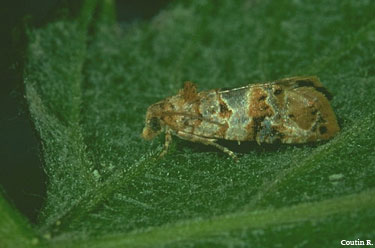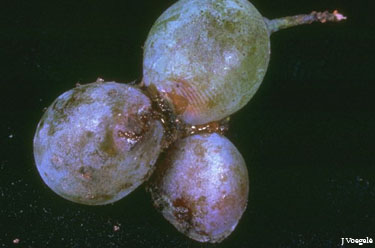The European Grapevine Moth (EGVM) is a known pest of grapes in northern and western Africa, Europe, Japan, the Mediterranean, the Middle East, the Near East and southern Russia. EGVM studies have concluded that larvae feed primarily on grape flowers and berries. EGVM is also known to feed on a number of other hosts including blackberries, cherries, nectarines, olives, persimmons and pomegranates.
In October 2009, a single EGVM moth was detected in a Napa County, California vineyard near Oakville. Multiple larvae were also detected at the same location. This marked the first known occurrence of the moth in the United States. The pest has now been detected at several sites, generally contained in two pockets of infestation: one on the eastern side of the City of Napa and the other between Oakville, Rutherford and St. Helena. A State Interior Quarantine covering 162 square miles has been established in portions of Napa, Solano and Sonoma counties.
For EGVM updates in Napa County please visit the the Napa County Agricultural Commissioner-Sealer of Weights and Measures website.
EGVM have not been detected in Kern County.
As a precautionary measure the California Department of Food and Agriculture and County Agricultural Commissioners are placing EGVM traps in commercial vineyards at a rate of 16 traps per square mile (1 trap per 40 acres) in areas outside the quarantine zone.
On Wednesday, March 17, 2010 Kern County Department of Agriculture staff members began placing traps in commercial vineyards in the southern part of the county. A total of 1,744 traps will be set in Kern County. All areas of the county will be covered, but not all vineyards will receive traps. The traps will be checked once every two weeks. Every trap will be located using GPS technology. This will allow for mapping EGVM presence/spread and also for recording areas surveyed with no EGVM found. The traps will be maintained for three months (one life cycle) and not relocated.





